Walk: 1. Presidio Pickleball 2. TJ's then Movie Time (Zoom Discuss The Two of Us, watch Another Round) 3.Golden Gate Park Magnolias
Distance: 1. 2.3 miles, 90 minutes pickle 2. 2.5 miles then sit discuss & watch 3. 8 miles
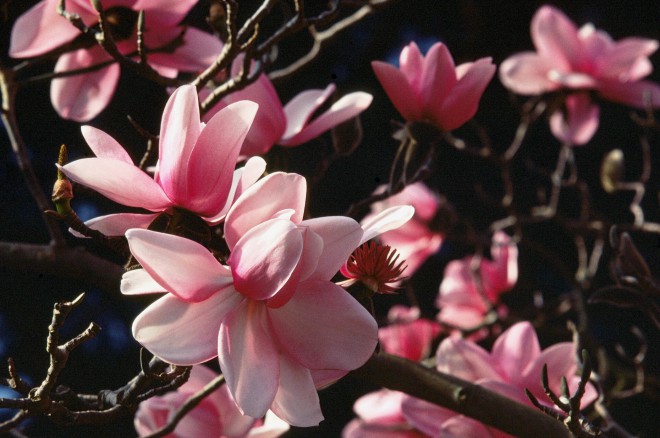 |
| Magnolia campbellii |
Walk: 1. Presidio Pickleball 2. TJ's then Movie Time (Zoom Discuss The Two of Us, watch Another Round) 3.Golden Gate Park Magnolias
Distance: 1. 2.3 miles, 90 minutes pickle 2. 2.5 miles then sit discuss & watch 3. 8 miles
 |
| Magnolia campbellii |
Walk: 1. 2 annual checkups (all good!) 2. Japantown
Distance: 1. 4 miles 2. 2.5 miles, Yoga
Ciwt's check up and vaccine season has begun so she will be getting her exercise walking from medical venue to medical venue for a few weeks -- and happy to be able to do it 😊.
Walk: 1. Monday Errands 2. Presidio Pickleball
Distance: 1. 4 miles 2.2.5 miles, 90 minutes (sweltering) pickle, small stretch
 |
| Jim Farrant (English), Sweet Peas and Daisies, undated (ca. 2010) |
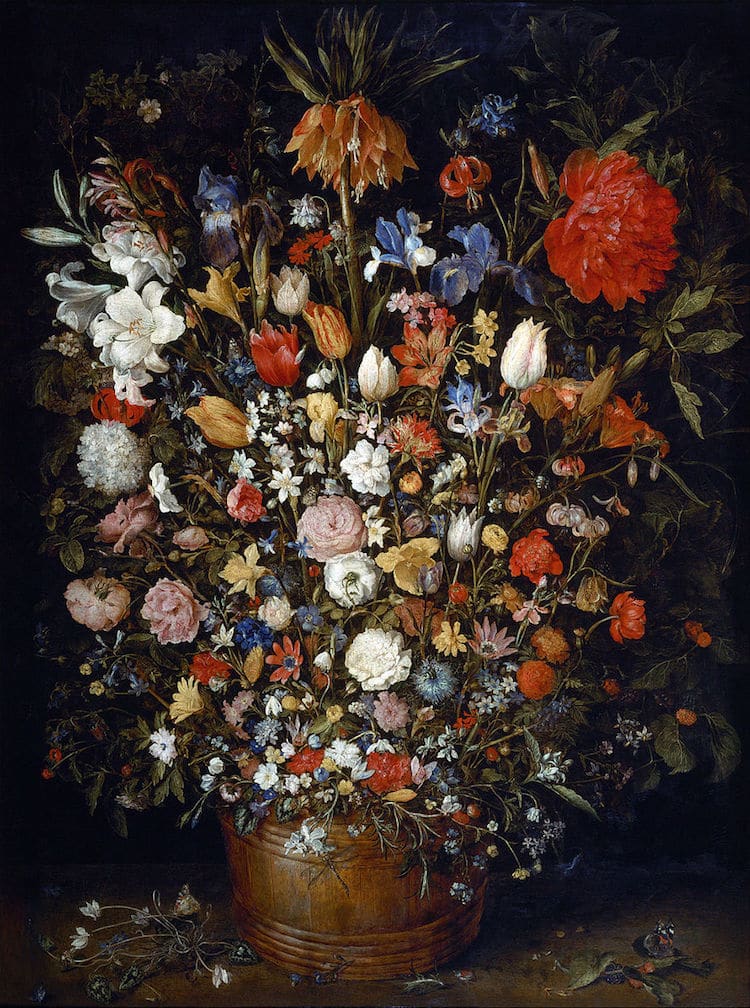 |
| Jan Brueghel the Elder, Flowers in a Wooden Vessel, 1606-1607 |
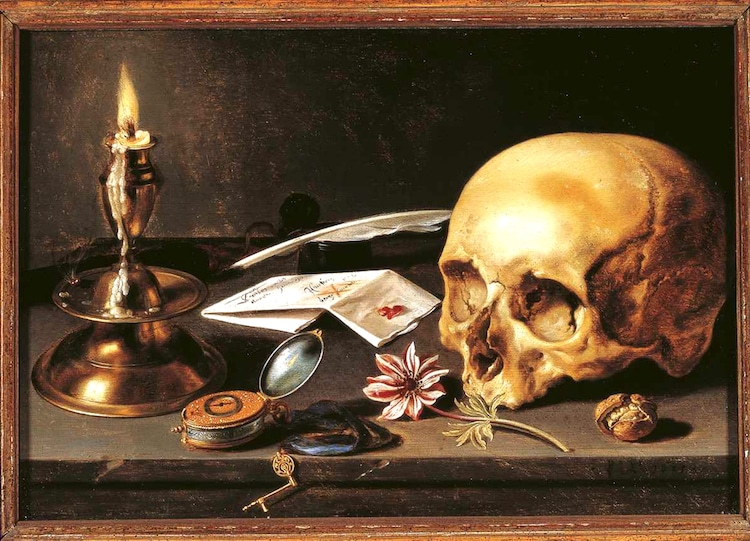 |
| Pieter Claelsz, Vanitas Still Life, 1625 |
Walk: Hood
Distance: 2 miles, small yoga

Walk: Presidio Pickleball
Distance: 2.5 miles, 90 minute pickle
Walk: No, Too stunned by Nomadland
Distance: n/a
After something like 100,000 years, mankind evolved from covering itself with animal pelts, furs, probably leaves to being able to produce textiles so easily and inexpensively that there could be 'fiber art.' That is, textile-based objects that have no intended practical use. And, particularly since the 1960's the dedication, creativity and skills of fabric artists around the world have elevated the field to high art. Take a look at wonderfully imaginative works by a few of them.
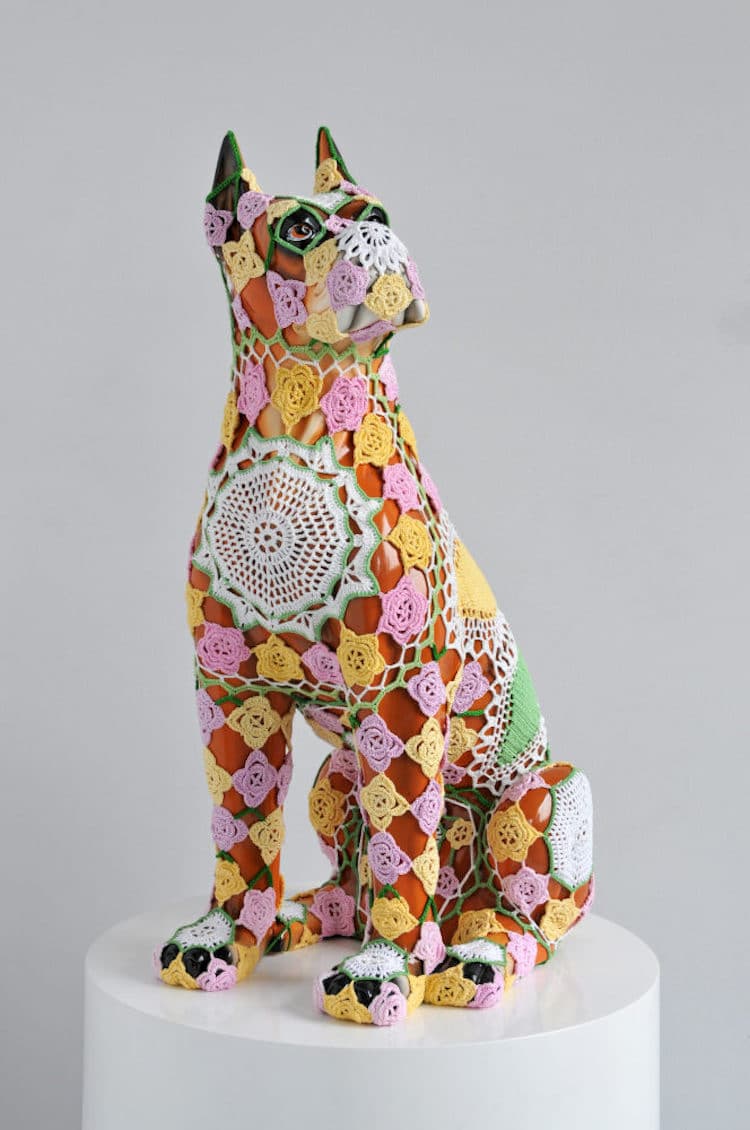 |
| Joana Vasconselos, Crochet Dog |
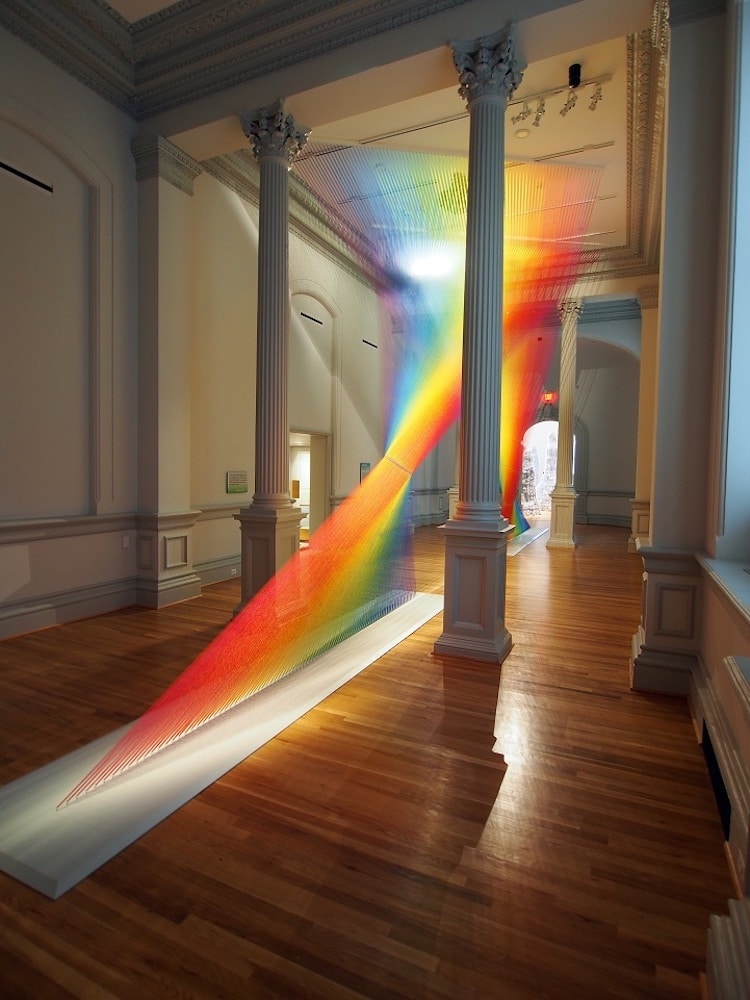 |
| Gabriel Dawe, Rainbow Thread |
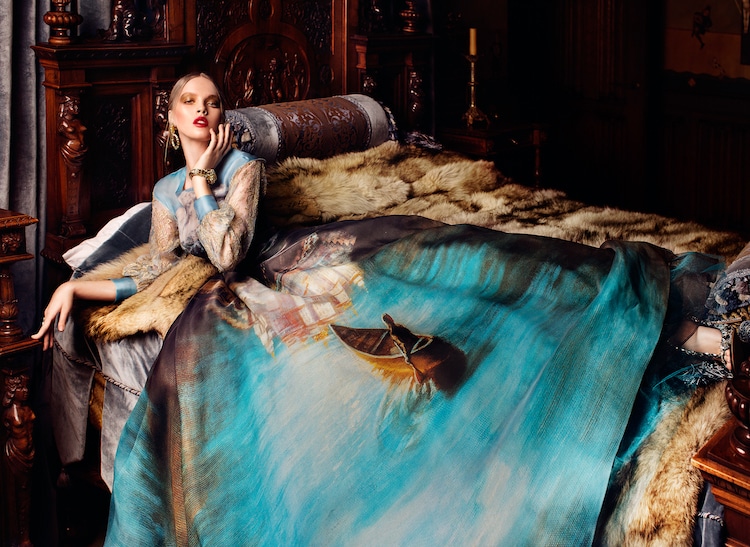 |
| Svetlana Lyalina, Tapestry Dress/Canvas |
Walk: 1. No, doing CIWT computer stuff 2. Hood
Distance: 1. n/a, Yoga 2. 2.8 miles, 1 hour pedal, Yoga
Walk: Presidio and Hood
Distance: 5 miles
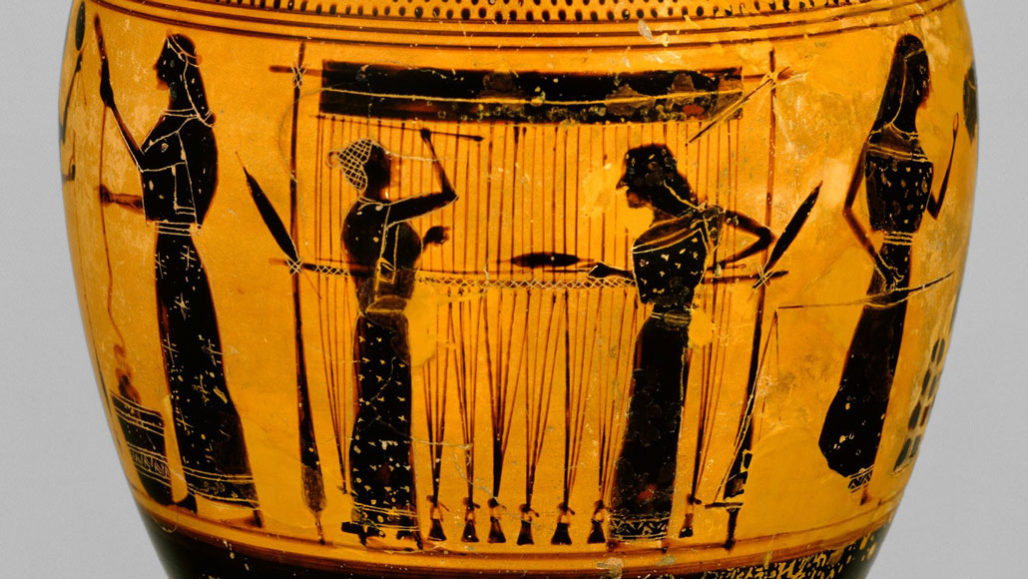 |
| Greek oil flask from about 550 B.C. supports the idea that spinning and weaving were primarily women’s work*. |
Silly Ciwt is still trying to get some grip on the history of textiles.
Of all the art histories fabric (clothing, design, manufacture) is the least accessible, largely because of supply and fragility. Much is known about ceramics because it is endurable (although usually not in its original, unbroken form). Even ancient wood objects, while rare, have surprising longevity with one existing Spanish tool fragment assigned by scholars to a range of 55,000 - 13,000 BC..
But not so fabric. What little ancient material has been found is in tatters and very fragile, needing to be stored in conditions that give scholars very limited access. And those fabrics give no indication of their original shape and color, ownership (priviliged or lower class), relative quality at the time it was used or worn, manufacture. There is a fine linen shirt preserved in the tomb of Tutankhamum and now at the V and A Museum that dates from around 1360, but such a survival is extremely rare.
Much of the early history of fabric is told by art such as the Pompeiian wall paintings which show actual contemporary fashion as well as how fabrics were used as wall, floor and table coverings. Every great once in a while early textiles have left impressions on corroded metal or clay. And there are a variety of ancient economic accountings of fabric holdings or trade. Historians (including scientists) grope their way along. Imagine trying to reconstruct the civilization from this 3,000 year old fragment thought to be the first instance of chemical dying in history: 
Basically textile history is essentially obscure until the 1550's. By then more people were econically able to consume, there was (slightly) more leisure, more colonies, more trade routes and mediums of exchange, more artists, more consumers, more more mercantile organizations, more inventions. Paintings were in demand and through them historians can get an actual look how life was being lived, dressed and furnished.
 |
| Jean Francois de Troy, A Reading from Moliere, 1728 |
When demand for fabric really caught on and the economies of countries (such as wool in England), towns and cities were nearly solely based on it, some events read like thrillers. Weavers were lured to ambitious areas, some actually kidnapped; citizens were forbidden - often on penalty of death -to wear clothing of fabrics manufactured outside their realm. Merchants from foreign countries were watched like spies, apprehended and jailed if they traded in forbidden fabrics or disallowed quantities. Inventions were kept under lock and key.
From the 1550's it was on to the Industrial Revolution (1780-1880) and into the modern era culminating for now with the invention of elastic, wrinkle resistant synthetics and rumors of 'smart fabrics' which will do things like light up, change colors, harness heat and sound. All in all, fabric has come a long way, but, really, the four original all-natural fabrics - linen, cotton, wool, silk - whatever their obscure histories will likely prove impossible to improve on.
* And economically exceedingly important.
Walk: No, Rain 😀
Distance: n/a, Yoga
 Claes Oldenburg & Coosje van Bruggen, Corridor Pin Blue, 1999, stainless steel, aluminum and glazed acrylic enamel (de Young Museum, San Francisco) |
So, Ciwt was reading about outdoor sculpture gardens and some of their lovely, harmonious artistic offerings to nature. Then she thought of our local de Young Museum's sculpture garden which is just off its cafeteria. You buy your food, take it by tray to a table along the greenery, hear the birds chirp and look out to view ... a huge safety pin.
Not harmonious, but that was just fine and had been long before its creation in 1999 with its team of artists, Claes Oldenburg and Coosje van Bruggen. In 1961 Oldenburg wrote in his poem I Am For Art "I am for an art that does something other than sit on its ass in a museum." And later in the poem 'I am for an art that you can hammer with, stitch with, sew with, paste with, file with. I am for an art that tells you the time of day, or where such and such a street is. I am for an art that helps old ladies across the street....."Walk: Presidio Pickleball
Distance: 2 miles, 1 hour Pickle, Yoga
So on Valentine's Day Ciwt's mind goes to flowers.
She's reported before that she would surely have tried to corner the market and wound up in debtors' prison during Holland's 17th century tulipmania. Such is her supreme affection for that flower.
Either way, the "Peruvian Lilies" are like delicate sunshine, lighting up her home and heart. - and lasting for weeks.
Oh, and they are often known as the "Flower of Friendship" so a perfect way to say Happy Valentines Day to her readers.
Walk: T. Joe's, Laurel Village
Distance: 3 miles, small yoga
A little bit of necessary rain out here puts Ciwt in mind of that fashion icon, the trench coat.
You probably have one and look completely smashing in it.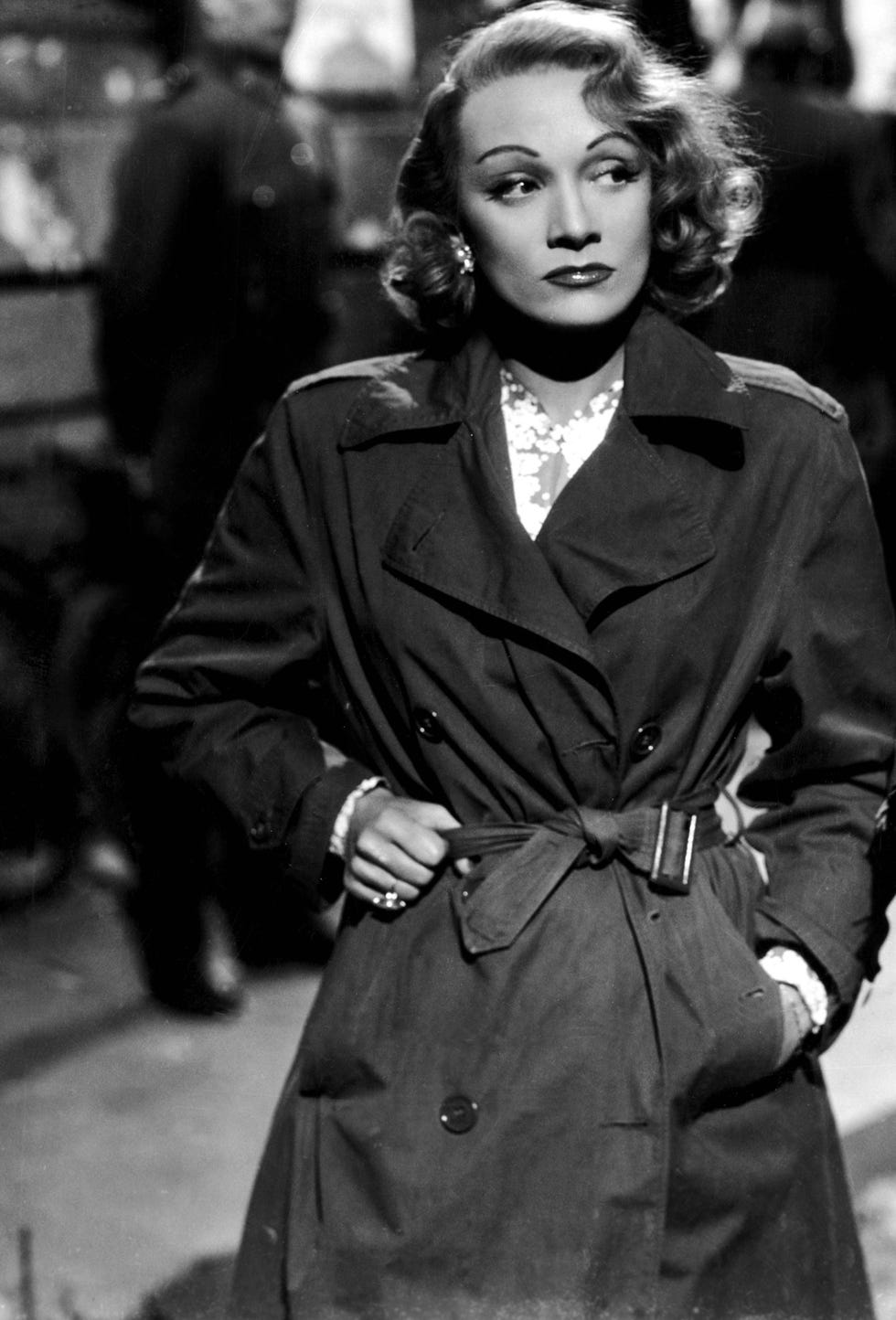
Everyone does - man, woman, even child  .
.
Except Ciwt. When she puts one on she looks like she's wearing an over sized bathrobe.  Bad enough, but then when the 'fashion' designers reimagine it, well......
Bad enough, but then when the 'fashion' designers reimagine it, well......
Walk: Presidio Pickleball, Moscone Convention Center
Distance: 4.5 miles, 40 minutes pickle, small yoga
So the current buzz around San Francisco - or at least among Ciwt's age group citywide - is how the city's mass Covid 19 vaccine site is functioning.
Ciwt is guessing most people reacted like she did when it was first announced there would be one at our downtown Convention Center. "Oh no, it will be a disaster. Big crowds, long waits, confusion, maybe worse than the DMV." Ciwt definitely was going to avoid that site at all costs.
But then she ran into a fellow pickleballer who gave the experience a glowing review. He got an appointment for the next day, whisked right in, everything was beautifully organized, spacious, as safe as he could possibly want. Hmm, so Ciwt doubtfully gave the online scheduling site a try. And, yup, next day appointment, whisked right through, beautifully organized, smiling, helpful attendants galore to point you to exactly where you needed to be, no time even to crack open the book Ciwt was sure she'd need during the long wait. Basically just as described; Better actually.
And the extra nice thing is the wonderful workers who are manning the site are being lifted up by all the thank you's and compliments. When Ciwt told 'her' nurse about all the good buzz around town, she said "That's what everybody's telling us! Friends or neighbors or just strangers are encouraging others to "Just Go; it's great!"
There's another mass vaccine site at the other end of the city. A drive through at UCSF. Again, Ciwt thought "Oh no," and again rave reviews from people who have driven over and quickly, efficiently gotten their shots and been scheduled for shot 2.
So uplifting - and amazing - to have a positive pandemic experience.
Walk: 1. Stern Grove Pickleball, Hair Appointment 2. Tj's
Distance: 1. 1.5 miles, small yoga 2. 2.5 miles, Yoga
Harder than writing for Ciwt is figuring out what to write about.
Walk: Hood
Distance: 2 miles, Yoga

Walk: No, No interest
Distance: n/a, Yoga
Little of interest to do or say. Yoga done. Might as well rest.
Walk: Presidio Pickleball
Distance: 2.6 miles, 1 hour pickleball
 |
| Tom Brady, Tampa Bay Buccaneer, Age 43 |
What could Ciwt possibly say about the 43 year old man who is playing in his 10th Super Bowl today, this time in his first season with a brand new team?
Nothing of course. But leave it to the WSJ's Jason Gay to put a delightfully original spin on this phenonenon:
Brady is the greatest quarterback to ever play football, and he wants to keep playing the game that he loves. If you play football long enough, the road eventually leads to the Raiders.
And then, at age 80, Tom Brady joins the Knicks.
Distance: 4.5 miles, 2 hours pickle
So if you look to the upper right of this photo, you will (maybe) find a wintering Palm Warbler* pecking at some budding spring cherry blossoms. It's that time of year out here; part winter/part spring.
Walk: Presidio Pickleball
Distance: 2.5 miles, 90 minutes pickle
So most of Ciwt's days begin on line with the NYT Mini Crossword Puzzle. When she finishes it, she texts her score to a friend back East who co-ordinates a daily Mini contest among players she's put together. 9 times out of 10 Ciwt loses to her friend's son. Everybody does! We refer to him as The Pro.
BUT yesterday morning Ciwt scored her all time low. 35 seconds! as you can see from the screen shot. No hitting the wrong keys and wasting time correcting or stopping to scratch her head over a clue. It was far and away the winning time of the day.
(Oh, The Pro happens to be on a Mini hiatus. But surely Ciwt would have bested him.. ...)
Walk: Errands
Distance: 5 miles, Yoga
So the pandemic seems to be having an effect on Ciwt's taste buds. Never one for desserts (unless it is ice cream or pecan pie), she finds herself eying the local bakery shelves much more carefully these days. And thinking of some lucious looking art. Like these galettes Claude Monet has captured with golden perfection.
 |
| Claude Monet, Les Galettes, 1882, 25.5" x 31.8", o/c |
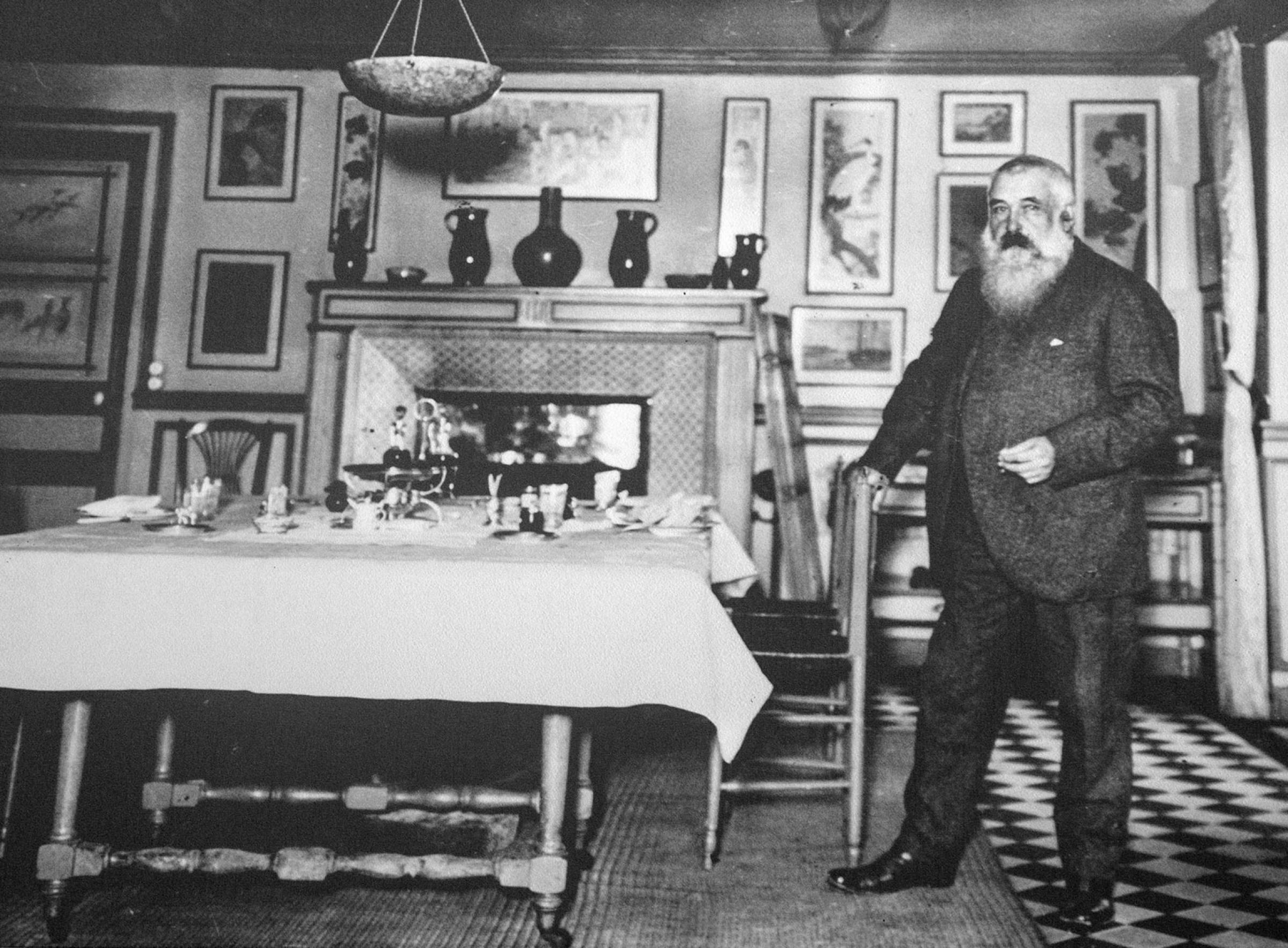 |
| Monet in his yellow Giverny dining room with some of his extensive collection of Japanese prints on the walls |
.jpg/1280px-Raphaelle_Peale_-_Still_Life_with_Cake_(1818).jpg) |
| Raphaelle Peale, Still Life with Cake, 1818, o/c, 10.7" x 15.2" (Metropolitan Museum of Art) |
 |
| Blackberries, ca.1813, o/c, 7 1/4" x 10 1/4" (De Young Museum, San Francisco) |
Or, Maybe one of these days Ciwt will decide to really dive in to those desserts she keeps walking by. And maybe that day she'll be tempted to buy all the cakes because they will all look as sumptuous as Wayne Thiebaud's astonishing artistic odes to dessert. Hopefully she'll remember they are as loaded with calories as Thiebaud's works are loaded with historic references to past techniques and artists like Morandi, Matisse (💗), Ingres (from yesterday's CIWT), Bonnard, Albers. After 60 years of daily painting (he turned 100 this year) those artists and his own "American drive' have inspired him to keep exploring the perfect formal recipe for painting a dessert in a way that it has never been painted before.
 |
| Wayne Thiebaud, Cakes, 1963, o/c, 5' x 6' |